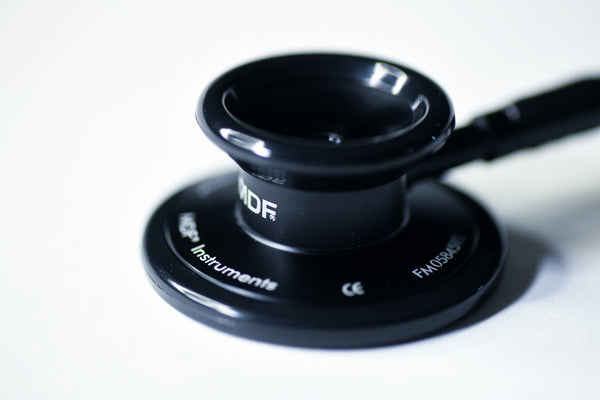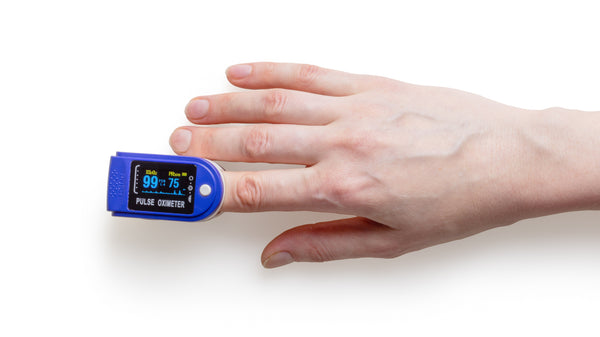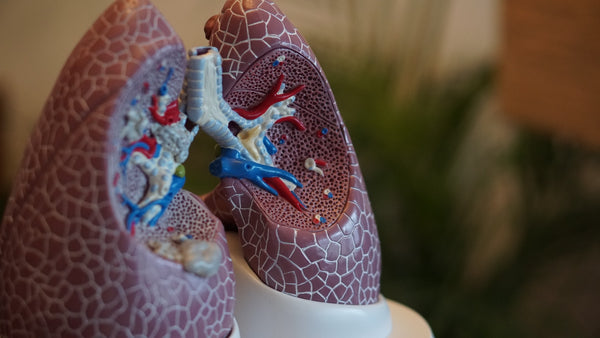What Are Vital Signs (And How to Check Them)
Are you wondering what the term "vital signs" means? While vital signs are very commonly known among healthcare professionals, the average person might not know their full significance. In this article, we'll discuss the most common vital signs, how to check them, and what they mean.
Vital signs get their name because they measure the "vital" functions of the human body. The most common vital signs include heart rate, breathing rate, blood pressure, oxygen saturation, temperature, and mental status. However, depending on the patient, health professionals will check other more relevant vital signs as well.
Let's list some of the most common vital signs and explain each of them in more detail. Learning to recognize changes in a person’s vitals can be lifesaving!

The Most Common Vital Signs that Doctors, Nurses, and Paramedics Check
There are many vital signs healthcare providers will check when assessing and treating a patient. Before we get into more information, we should go over a few disclaimers.
First, everyone's vitals are a little bit different. What's normal for one person might not be normal for someone else.
Many factors play into a person's vital signs. A young person will have different vital signs from an older person. Someone on special medications may have different vital signs than someone on no medication.
Second, vital signs are not interpreted in isolation. What does this mean? It means that vital signs are most valuable when tracked over some time.
Also, vital signs should be corroborated with each other. If someone is alert and talking to you normally, this means that they have some sort of pulse - even if you can't feel it. It's important to consider a person's whole health picture, not become fixated on one thing.
Last, not all vital signs are accurate.
This is especially important for civilians to understand. Hospitals and ambulances pay thousands of dollars for equipment to read vital signs. The blood pressure machine you buy at the grocery store may not always be accurate. This is something to keep in mind before you begin worrying about "bad" vital signs.
Alright, now that we have some of that out of the way, let's get into vital signs, what they mean, and how to check them.
Here is a list of the most common vital signs:
Let's have a look at each of these vital signs in more detail.

Vital Signs: Pulse Rate (Heart Rate)
What does it measure and mean: The pulse rate is a measure of your heart beats per minute. A common range for your heart rate is anywhere between 60 and 100. However, the pulse can be faster in children and slower in people who perform cardio exercise regularly.
The pulse can be slower in people who are taking special medications to control blood pressure or heart arrhythmias. What does it mean? The pulse rate can mean a lot of things.
If the pulse is super high, it can mean that someone is in distress or that they've lost blood. A super high pulse can also indicate a dangerous heart arrhythmia such as SVT. A fast pulse (above 100) is known as tachycardia, and a slow pulse (below 60) is known as bradycardia.
How to check pulse rate: One of the simplest ways to check a pulse is to feel the radial pulse, which is located on the wrist under the thumb. Count the number of beats in 30 seconds and then double it to get an average heart rate. If you have a stethoscope you could listen for the pulse directly over the heart.
Vital Signs Breathing Rate
What does it measure and mean: Just like a pulse rate, the breathing rate is the number of breaths you take in a minute. A common "normal" number is about 16 breaths per minute, but this varies widely. Babies may normally breathe up to 40 times per minute.
People who are breathing too fast are often having a problem with their lungs. They might have asthma, COPD, or bronchitis. Also, people will breathe fast when they're losing blood, or when their heart isn't pumping blood effectively. People often breathe too slowly when they've overdosed on a narcotic.
How to check breathing rate: To check someone's breath rate, watch their chest rise and fall. In young children, you might have to watch their belly. County how many times they breathe in 30 seconds and then double that to get an average breath rate.

Vital Signs: Blood Pressure (BP)
What does it measure and mean: Blood pressure measures the pressure of the blood within your blood vessels. Think about blood pressure similar to squeezing a half-empty water bottle. The bottle appears to fill with water when you squeeze it, and the pressure goes back down along with the water level when you release it.
A similar thing happens in the body. When the blood pressure is too low, vital organs (like the brain), won't get enough blood/oxygen, leading to possible failure. When the blood pressure is too high, the blood vessels can become damaged or even burst, leading to internal bleeding and strokes.
As you might have heard, normal blood pressure for an adult is around 120/80. It can often be lower in children.
How to measure blood pressure: It's a little hard to explain over text how to measure blood pressure. Here's a video showing how to take blood pressure even if you don't have a stethoscope.
To check blood pressure, you apply a blood pressure cuff, then inflate it until you no longer can feel a pulse below the cuff. Then you slowly release the air and measure two points. First, you note when you first feel/hear a pulse again (that's the systolic blood pressure). Then, you note the last beat that you can hear - this last beat is your diastolic pressure (you'll need a stethoscope for this).
Vital Signs: Temperature
What does it measure and what does it mean: Most of you know how to check a temperature. A normal temperature is about 98.6 F. High temperatures indicate fever and infection, and low temperatures can indicate late-stage infection and hypothermia.
How to check: There are many ways to check a temperature. Follow the instructions on your thermometer. Know that not all thermometers are accurate.
Vital Signs: Mental Status
What does it measure and mean: Checking someone’s mental status helps determine the severity of an injury or illness. When someone isn't fully awake or alert, it means something is going wrong on the inside. It could be due to low blood sugar, drug use, stroke, or shock.
How to check mental status: There are many ways to check mental status. In general, check to see if a person knows these four things: their name, the date, where they are, and what happened.
Vital Signs: Oxygen Saturation (SpO2)
What does it measure and mean: SpO2 measures the percentage of oxygen attached to the hemoglobin in the blood. A normal reading is anywhere from 94% to 100%. If the SpO2 is too low, it means that the person isn't getting enough oxygen for some reason.
How to measure it: to measure SpO2, you'll need a SpO2 meter. This is a special tool that is placed on the person's finger. Be careful, because cheap SpO2 meters are known to be inaccurate.

Vital Signs: Lung Sounds
What does it measure and mean: Lung sounds can tell you all sorts of things, but the main thing lung sounds tell you is whether a person's lungs are open and moving air. If you hear wheezes (these are high-pitched whistling sounds), rhonchi (this sounds like spattering fluid), or crackles (this sounds like crackling rice crispys), then the person is probably having a pulmonary (lung) related issue.
How to check lung sounds: with a good stethoscope placed directly on a person's skin, you want to measure their upper lungs and their lower lungs. Start on the top and then check side to side, comparing one side against the other. Move your way down their chest or back. This takes practice!
Vital Signs: Pupils
What does it measure and mean: The pupils (black dot in the eye) can tell you a lot. If the pupils are unequal (one is bigger than the other), this could indicate a head injury. If the pupils are not reacting to light (becoming smaller in light, larger in darkness), this could also indicate a problem with their brain. If the pupils are small, this could indicate an opiate overdose.
How to check: Look at the person's eyes and ask them about their vision. Use a gentle flashlight to flash over their pupil and check for a normal reaction.
Vital Signs: Skin Signs
What does it measure and mean: The skin is the body's largest organ, and it can tell you many things. In general, the skin should be warm, dry, and normal in color. If the skin is sweaty, pale, or cold, it could indicate a serious illness.
How to check: Just look at the person's skin. If you don't know the person, ask a friend or family member if they look normal to them. Feel their hands and their head for temperature.
Knowing When to Seek Help
Learning to check vital signs takes work! You'll need to practice on yourself and on your family to learn what "normal" looks like. Do your best to learn about the people in your circle so that you can tell when "something is off."
Being proactive about monitoring vital signs is an integral part of maintaining good health. Regular check-ups and understanding your baseline values contribute to the early detection of potential health issues.
However, vigilance is key, and recognizing the signs that warrant immediate medical attention can be life-saving. Whether you're caring for yourself or someone else, staying informed about vital signs and knowing when to call 911 empowers you to take charge of your health and well-being. Remember, it's always better to seek help sooner rather than later when it comes to matters of the heart – and the rest of the vital signs that keep us ticking.
Also, keep in mind that this article is not meant to be medical advice, nor is it the authority when it comes to vital signs. In any emergency where vital signs are significantly affected, please call 911 or seek assistance from trained medical professionals.
Now that you know more about vital signs, take some time to create a family first aid kid!

